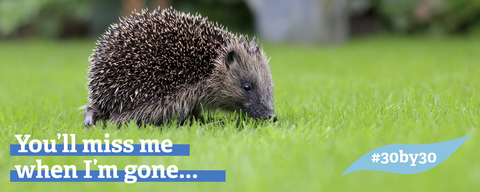
Our natural world is in trouble
This is no secret. Wildlife is disappearing at an alarming rate - some are calling it the next mass extinction - and the threat of climate catastrophe is a constant worry. We live in a time of emergency.
There is still hope - we can tackle both of these critical issues - but we have to act now. Time is running out.
What needs to happen?
The Wildlife Trusts are calling for at least 30% of our land and sea to be connected and protected for nature’s recovery by 2030. Making more space for nature to become abundant once again will give our struggling wildlife the chance to recover and also restore beautiful wild places - places that store carbon and help to tackle the climate crisis.
30% is the bare minimum that nature needs to start recovering but we are far short of this and need your help to turn things around. Collectively, Wildlife Trusts across the UK have raised almost £8 million in the six month since the 30-30 launch. Read more here.
Craig Bennett, CEO of The Wildlife Trusts is urging the Government to deliver real change in order to save and protect our wildlife: “We need to see a much greater level of action on the ground to deliver on the ambition set out by the Prime Minister, and to put nature into recovery. This means rescuing the wildlife sites currently in decline, while also making more space for nature through a new wildlife designation called Wild Belt, specifically aimed at putting nature in recovery – protecting and connecting nature right across the country.”
In Shropshire, we have successfully purchased meadows next to the The Stiperstones, which are being managed to encourage wildflowers to flourish. We are working in partnership with the Shropshire Hills AONB and the National Trust, along with Natural England to restore roadside verges and to create new wildlife corridors. It is possible to bring back nature from the brink, but we can't do it without the support of our partners and members.
